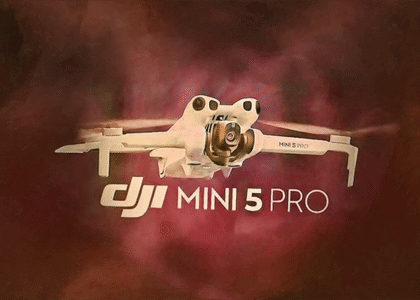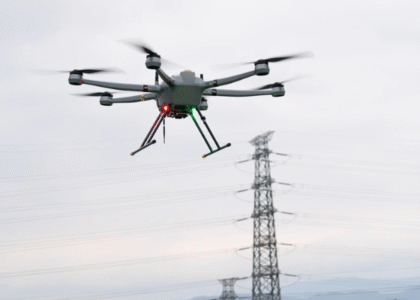Thinking of flying a drone in India this year? You’ll need more than just a steady hand and a good GPS lock. With India’s drone ecosystem rapidly evolving and commercial, industrial, and recreational applications soaring, understanding the latest DGCA drone guidelines India is critical.
As of 2025, the landscape has changed. From strict licensing protocols and real-time airspace approvals via the Digital Sky airspace map to mandatory drone flight training for even hobbyist pilots in certain zones, navigating the skies now demands regulatory clarity and technical competence.
And here’s the kicker: fail to comply, and you’re not just grounded, you could face hefty penalties or permanent license suspension. Whether you’re a real estate developer surveying sites, a logistics firm deploying VTOL drones, or an aspiring cinematographer taking your DJI Air 3 for a spin, the rules are no longer suggestions.
The question now is: are you equipped to fly legally and confidently under Indian drone laws in 2025?
Let’s break it down.
1. Evolution of Drone Regulations in India
India’s drone framework has shifted from a blanket ban on civil UAV use in 2014 to a “trust‑and‑verify” model today. Key milestones include:
- October 7, 2014: MoCA drafts Civil Aviation Requirements (CAR) for civil UAVs, limiting operations to VLOS, daytime, 200 ft altitude.
- December 1, 2018: DGCA’s Drone Regulations 1.0 introduce NPNT via the Digital Sky Platform.
- January 1, 2021: Drone Rules 2021 come into force, simplifying permissions and introducing UIN, UAOP, and RPL categories.
- February 11, 2022: Drone (Amendment) Rules 2022 update safety and operational standards.
- June 21, 2024: Bharatiya Vayuyan Adhinayam 2024 enacted, expanding penal provisions and enabling corneal tissue transport tests.
- January 15, 2025: DGCA issues enhanced training guidelines for Remote Pilot License (RPL) candidates (new syllabus, simulator requirements).
- April 3, 2025: Separate license category and practical training introduced for BVLOS pilots operating in urban and semi-urban zones.
2. Licensing Framework & Categories
Under Drone Rules 2021 and BVPA 2024, operators must secure:
| License/Certificate | Applicability | Validity |
| Unique Identification Number (UIN) | All drones above 250 g | Lifetime |
| Unmanned Aircraft Operator Permit (UAOP) | Commercial operations | 5 years (renewable) |
| Remote Pilot License (RPL) | Individuals flying drones ≥ 2 kg | 5 years (renewable) |
Key process for RPL:
- Enroll at a DGCA-approved training centre.
- Complete ground theory (air regulations, meteorology) and simulator sessions.
- Pass written exam and practical flight test.
- Apply for RPL on Digital Sky.
Have you checked whether your drone model falls under Nano (< 250 g), Micro (250 g to 2 kg), Small (2 to 25 kg), Medium (25 to 150 kg), or Large (> 150 kg)?
This classification determines your training requirements and airspace permissions.
3. Digital Sky Airspace Map & Flight Permissions
The Digital Sky portal is your one‑stop Unmanned Traffic Management (UTM) system. Its interactive Airspace Map divides the skies into:
- Green Zone: Up to 400 ft, NPNT‑compliant drones can take off without permissions.
- Yellow Zone: Permission required from ATC (400 to 200 ft near airports).
- Red Zone: Strictly prohibited areas (airports, international borders).
Before every flight:
- Log in to Digital Sky and check the map.
- Apply for any Yellow‑Zone or BVLOS permissions.
- Download the NPNT manifest and ensure your drone’s firmware matches.
Skipping these steps can incur fines of ₹50,000 to ₹5 lakh or even criminal charges.
4. Drone Flight Training
Curriculum & Syllabus Breakdown
Training programs for the Remote Pilot License (RPL) must cover:
- Air Regulations & Airspace Management
- Indian Airspace classification (Green/Yellow/Red zones)
- Rules for Visual Line‑of‑Sight (VLOS) and Beyond Visual Line‑of‑Sight (BVLOS) ops
- Use of the Digital Sky Airspace Map
- Indian Airspace classification (Green/Yellow/Red zones)
- Meteorology & Flight Planning
- Reading weather charts and METAR reports
- Determining wind effects on flight endurance
- Pre‑flight checklists and risk assessments
- Reading weather charts and METAR reports
- Principles of Flight & Drone Dynamics
- Aerodynamics specific to multirotor and fixed‑wing platforms
- Payload effects on center‑of‑gravity and stability
- Aerodynamics specific to multirotor and fixed‑wing platforms
- Human Factors & Crew Resource Management
- Fatigue management, decision‑making under stress
- Crew coordination for complex missions
- Fatigue management, decision‑making under stress
- Radio Communication & Navigation
- Standard phraseology for coordination with ATC (for Yellow‑Zone flights)
- GNSS/GPS navigation systems and failure protocols
- Standard phraseology for coordination with ATC (for Yellow‑Zone flights)
- Safety, Emergency Procedures & Maintenance
- Battery management, failsafe settings, emergency landing protocols
- Routine inspection, logbooks, and preventive maintenance
- Battery management, failsafe settings, emergency landing protocols
- Practical Flight Training
- Simulator sessions: minimum 5 hours (as mandated in January 2025 DGCA update)
- Actual flight: at least 10 hours for Small Category drones (2 to 25 kg)
- BVLOS module (optional/add‑on): onboard safety pilot procedures
- Simulator sessions: minimum 5 hours (as mandated in January 2025 DGCA update)
Simulator vs. Live Flight Sessions
| Training Component | Mandated Hours | Key Objectives |
| Simulator Training | 5 hrs | Familiarize with controls, NPNT testing |
| Basic Flight Handling | 6 hrs | Takeoff/landing, hover, basic maneuvers |
| Advanced Manoeuvres | 4 hrs | Waypoint navigation, orbit, follow‑me |
| BVLOS Module | 5 hrs (opt.) | Coordination, emergency recovery |
- Simulators allow safe repetition of emergency scenarios (e.g., GPS dropout).
- Live flights build real‑world judgment on wind, obstacles, and battery management.
Duration, Fees & Registration
- Typical Duration: 4 to 6 weeks full‑time
- Fees Range: ₹55,000 to ₹1,20,000 (depending on drone category and institute facilities)
- Registration Process:
- Choose a DGCA-approved training organization.
- Submit high‑school diploma and medical fitness certificate.
- Pay the course fee and register on the Digital Sky portal under the “Training Centre” section.
- Attend a mandatory orientation covering DGCA policies and Digital Sky NPNT setup.
- Choose a DGCA-approved training organization.
Certification & Renewal
- Examination:
- Written test: 50 MCQs on regulations, meteorology, safety
- Practical test: 30‑minute sortie demonstrating defined maneuvers
- Written test: 50 MCQs on regulations, meteorology, safety
- Certification: DGCA issues RPL certificate within 2–3 weeks of passing.
- Renewal: Every 5 years, requires a 3‑hr refresher course and proficiency check.
Continuing Education & Specializations
Once you hold an RPL, consider:
- BVLOS Endorsement: Advanced courses for long‑range missions.
- Sector‑Specific Certifications:
- Precision Agriculture: NDVI mapping, crop‑health analytics
- Infrastructure Inspection: Thermal imaging, LIDAR basics
- Aerial Cinematography: Gimbal operation, shot planning
- Precision Agriculture: NDVI mapping, crop‑health analytics
5. Compliance & Penalties
Compliance Checklist
- UIN and UAOP/RPL certificates uploaded in Digital Sky
- NPNT compliance manifest
- Insurance (recommended for commercial ops)
- Respect privacy: no unauthorized data collection
Penalties
- Unauthorized flight in Red Zone: ₹5 lakh fine or 3 years jail
- NPNT violations: ₹50,000 fine per incident
- Flying without UAOP/RPL: Permit suspension
Case Study: Corneal Tissue Delivery
In December 2024, India’s first corneal tissue delivery by drone under BVPA 2024 showcased BVLOS safety procedures. This pilot, coordinated by DGCA and a leading eye hospital, underscored the drone’s potential in medical logistics.
Conclusion
As India tightens the screws on drone operations with the 2025 DGCA updates, one thing becomes crystal clear: compliance is no longer a formality. Whether you’re launching a drone delivery startup, managing aerial surveys, or exploring content creation, understanding the full scope of India drone laws, obtaining your drone license in India, and completing certified drone flight training are now essential prerequisites to success.
The shift is not just regulatory, it’s directional. India is building a structured, safe, and innovation-friendly UAV ecosystem. Staying ahead means not only knowing the rules but mastering them technically, legally, and operationally.
FlyandTech is a retailer that is a mission-driven drone ecosystem enabler. From top-tier drones by DJI, Autel, and QYSEA, to the DGCA-aligned training program tailored for both enthusiasts and enterprise operators, we help bridge the gap between policy and practice. Our expert-led training sessions, post-purchase guidance, and responsive support ensure you’re never flying blind.
FAQs
- Q: How long does it take to get a Drone Remote Pilot License (RPL)?
A: Typically 4 to 6 weeks, including ground classes, simulator hours, and flight tests. - Q: Can foreign nationals obtain a drone license in India?
A: Yes, apply for UAOP/RPL via Digital Sky. Additional security clearance may be required. - Q: Is insurance mandatory for recreational drone flights?
A: Not yet but strongly recommended to cover third‑party liability and damage.
- Q: What is the Digital Sky platform used for?
A: The Digital Sky airspace map is used for registering drones, applying for real-time permissions (NPNT), and ensuring you’re flying legally in India’s segmented airspace.







